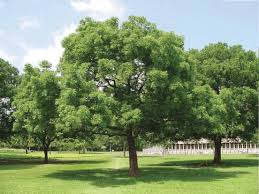
Saurabh Chandrakar Latest News
Saurabh Chandrakar, a distinguished botanist, has dedicated his career to studying the ecological benefits of various plant species. His recent research focuses on the neem tree (Azadirachta indica), a species renowned for its medicinal properties and environmental benefits. Chandrakar’s work emphasizes how neem trees can play a crucial role in temperature control and global warming mitigation, offering a comparative analysis with other tree species.
The Neem Tree: An Overview
Neem trees, native to the Indian subcontinent, are evergreen and can grow up to 20 meters tall. They are known for their resilience in arid environments and their ability to thrive in poor soil conditions. The neem tree has been utilized for centuries in traditional medicine, agriculture, and as a natural pesticide.
Temperature Control
-
Canopy and Shade: Neem trees have a dense canopy that provides significant shade, reducing surface temperatures beneath them. This shading effect is crucial in urban areas, where heat islands are a common problem.
-
Transpiration: Neem trees have a high rate of transpiration, the process by which water is absorbed by the roots and released as water vapor through the leaves. This process cools the surrounding air, contributing to a reduction in ambient temperatures.
-
Comparative Analysis: When compared to other common tree species such as eucalyptus and pine, neem trees demonstrate superior capabilities in maintaining lower temperatures in their immediate environment. Eucalyptus, for example, has a lower transpiration rate, making neem more effective in temperature regulation.
Mitigation of Global Warming
-
Carbon Sequestration: Neem trees are effective carbon sinks, absorbing carbon dioxide from the atmosphere and storing it in their biomass. Chandrakar’s research indicates that neem trees sequester more carbon per hectare than several other tree species, including acacia and banyan.
-
Longevity and Growth Rate: Neem trees have a long lifespan and a moderate growth rate, ensuring that they continue to sequester carbon over many decades. This long-term carbon storage is vital for mitigating the impacts of global warming.
-
Soil Improvement: Neem trees improve soil fertility through leaf litter, which decomposes and enriches the soil with essential nutrients. This process supports other plant life, enhancing overall biodiversity and ecosystem stability, which are critical factors in combating climate change.
-
Resilience to Climate Extremes: Chandrakar’s studies highlight neem’s resilience to extreme weather conditions, such as droughts and high temperatures, making them a reliable option for reforestation projects aimed at climate change mitigation.
Conclusion
Saurabh Chandrakar’s research underscores the neem tree’s significant potential in temperature control and global warming mitigation. Its superior shading capabilities, high transpiration rates, and effective carbon sequestration make it a valuable species in the fight against climate change. When compared to other trees, neem consistently demonstrates greater environmental benefits, particularly in arid and urban environments. Chandrakar advocates for increased planting and conservation of neem trees as a practical and sustainable strategy to address global warming and its associated challenges.